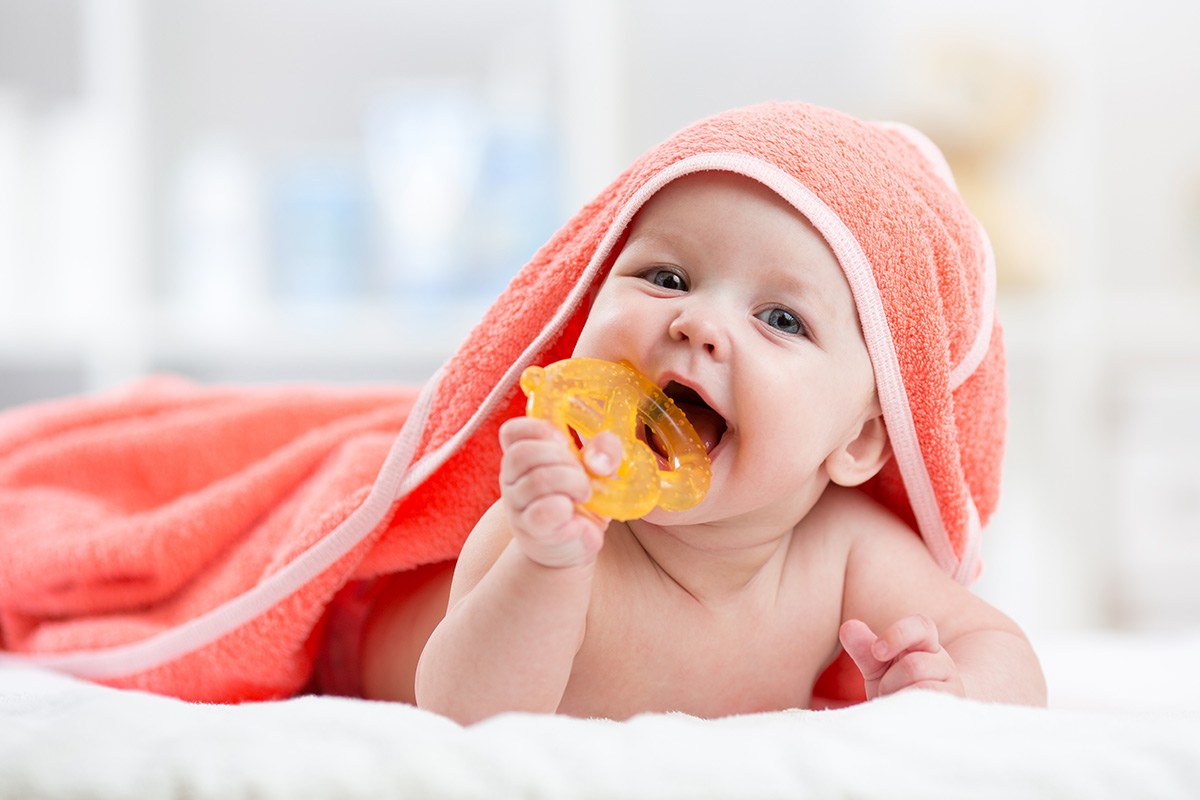Instead of letting your teething baby gnaw on your remote control or mobile phone, a baby teether can be a safe choice to help them get through the teething process. But at what age do babies use teethers?
In a previous article, we talked about the different signs to look out for when a baby is teething. There, we also shared how teethers can be a great option for soothing their teething pains. So at what age do babies use teethers?
Teething is such an important milestone and part of baby development. That’s why the best time to give a teether is when your little one is already showing signs of teething. Generally, this is between 4 and 6 months. But what exactly will a teether be good for, you ask?
Teethers have many important benefits for your little one.
-
- It helps provide relief from pain and discomfort. When a baby bites on a teether, the pressure applied on the gums offers some relief and allows them to feel less pain.
- It’s safer for babies. Random objects lying around your house are never a good teething toy alternative. Teethers are designed to be safe for your little one so you have one less thing to worry about.
- It’s a form of entertainment. Since some teethers also come with rattles and other features, they can be great at sensory play too.
- It trains the baby’s motor skills. From grasping to chewing, a teether can help in your baby’s development.
Different Types of Teethers
Teethers come in all shapes, sizes, and colors. Below are some of the different types of teethers you can consider for your baby and what makes them special.
- Teething Toy. This kind of teether serves multiple purposes–to help with teething pains and entertain your little one.
- Wooden Teethers. These are generally safe and non-toxic, just make sure the edges aren’t sharp.
- Cooling Teethers. Designed to be chilled in the fridge, these provide extra comfort because of a cooling effect on the gums.
- Water-based Teethers. These teethers are filled with water, which makes them easier and softer for babies to gnaw on.
- Gel-based Teethers. Similar to a water-based teether, this teether is filled with a non-toxic gel to make it easier for babies to gnaw on. Be careful when giving this teether to a baby who already has teeth though, as it may get punctured.
- Plastic Teethers. Although a bit harder, these are fine as teethers too. Ensure you choose BPA-free options.
- Teething Mitts. What makes teething mitts unique is that you don’t have to worry about your baby dropping them on the floor. This wearable teether stays in place and is fun for the little ones.
- Silicone Teethers. A great teething option, silicone teethers can be safely stashed in the fridge or freezer. Even better, they’re soft and easy to clean.
- Feeding Teethers. Besides soothing itchy gums, fruit feeders can also double as teethers. It’s a great way to give healthy snacks to your little one!
- Teething Jewelry. This kind of teether is designed to be worn by mamas or anyone taking care of a baby, so a baby can chew on them while they are being carried.
What Age Do Babies Use Teethers: Tips When Choosing A Baby Teether
Although teething pains are often associated with younger babies, some children still enjoy the benefits of a teether even as they approach their first birthday–or have already turned one! This is because molars start to erupt around 13 months of age.
Since they’ll be used a lot by your baby, it pays to scrutinize the teether you’ll purchase. Here are Mama’s Choice recommendations on how to choose a teether for your baby.
-
- Make sure it’s made of a safe material. Toxic materials are a big no-no. Ensure that the teether you’re buying clearly indicates that it is free of BPA, PVC, or phthalates. The latter can affect a baby’s development so be extra cautious, mamas!
- Check for durability. Teethers will go through a lot of biting and gnawing. As such, choose a durable teether that would ideally not break no matter how hard a baby bites on it.
- Hygienic or easy to clean. A washable teether is great, but even better would be if it’s sterilizer-safe. Plus, try to choose teethers that are easy to clean, with no corners or crevices that can collect dirt, dust, and germs.
- Mind the price. Of course, be practical about your purchase, too. Ensure that the teether you buy fits your budget.
- Easy to grip. There are many fancy teethers out there, but not all of them are easy to grip. The best teethers would have either a handle or a space for a baby to grip. Otherwise, a teether would just fall off easily.
- Versatile. Whether it can double as a toy or a teether, the baby teether you choose can have multiple uses so your baby can reap many benefits from it.
Did you like this article about what age do babies start using teethers? Share with us your baby teething tips in the comment section below!
Mama's Choice Team
A team of passionate writers, young mamas, and creative superheroes who help mamas face motherhood one educational article at a time!







